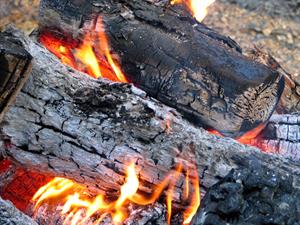
PUMPA - SMART LEARNING
எங்கள் ஆசிரியர்களுடன் 1-ஆன்-1 ஆலோசனை நேரத்தைப் பெறுங்கள். டாப்பர் ஆவதற்கு நாங்கள் பயிற்சி அளிப்போம்
Book Free DemoAny substance that can produce heat and energy on burning is called Fuel.
Example: Wood, coal, petrol, diesel and natural gas.

Coal as a fuel

Wood as a fuel
Fuels are classified into three different types based on their physical state. They are
- Solid fuels
- Liquid fuels
- Gaseous fuels
Solid fuels:
Since wood and coal are in a solid-state, they are called solid fuels. These fuels are easy to carry and store. The cost of production is also very low.
Liquid fuels:
The majority of liquid fuels come from the leftovers of dead plants and animals.
Example: Petroleum oil, coal tar and alcohol. These fuels burn with more energy without ash.
Gaseous fuels:
Gaseous fuels include coal gas, oil gas, producer gas and hydrogen gas. These fuels are easy to transport through pipes and do not pollute the environment.
Characteristics of fuel
The following characteristics should be present in an ideal fuel.
- Widely available.
- Easily transportable.
- Less expensive.
- High calorific value.
- Produce a lot of heat.
- It should not leave behind any unpleasant substances.
- It should not create pollution.
- Easily controllable, i.e., combustion should be easy to begin and stop whenever required.
Efficiency of fuel
Carbon is the most abundant element in fuels. Carbon mixes with oxygen during fuel combustion, releasing a large amount of heat. It is assumed that fuel releases the maximum amount of heat in the shortest time.
The following terms can help you understand fuel efficiency.
- Specific Energy
- Calorific value
- Octane number
- Cetane number
Specific Energy:
The quantity of energy produced by a unit mass of fuel is known as specific energy or massic energy. It is defined as the energy per unit mass. It is used to quantify the stored energy and other thermodynamic properties of certain substances. Its unit is Jkg^{-1}.
Calorific value:
Calorific value is the quantity of heat energy present in the fuels determined by their complete combustion at the standard condition and constant pressure. Its unit is written by expressing energy in kilojoule per specified amount in kilogram.
The calorific value of some fuels are listed below:
Fuel | Calorific value (kJ/kg) |
Cow dung | 6000-8000 |
Coal | 25000-33000 |
Wood | 17000-22000 |
LPG | 55000 |
Petrol, Kerosene, Diesel | 45000 |
Methane, CNG | 50000 |
Bio-gas | 35000-40000 |
Hydrogen | 150000 |
The formula for calculating calorific value:
\text{Calorific value} = \frac{\text{Heat produced}}{\text{Amount of fuel used}}
Note: We can also calculate the mass of fuel used and the amount of heat produced by rearranging the formula.
The formula for calculating the mass of fuel:
\text{Amount of fuel used} = \frac{\text{Heat produced}}{\text{Calorific value}}
The formula for calculating the amount of heat produced:
\text{Heat produced} =\ (\text {Calorific value} )\ \cdot\ (\text {Amount of fuel used} )
Octane number:
The amount of octane in petrol is indicated by the octane number. Ideal fuel is defined as petrol with a high octane number.
Cetane number:
The ignition delay of the fuel in a diesel engine is measured by the cetane number. The ignition delay is lowered when the cetane number is greater. The ideal fuel has a high cetane number.
Reference:
https://upload.wikimedia.org/wikipedia/commons/2/24/Firewood_with_flame_ash_and_red_embers.jpg
https://c.pxhere.com/images/bf/35/e492371ee3cb07a674cd73ab3ba9-1454103.jpg!d